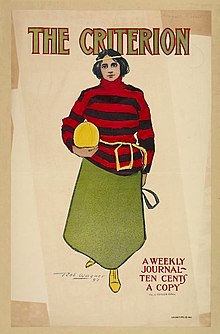
A cartoon is a type of visual art that is typically drawn, frequently animated, in an unrealistic or semi-realistic style. The specific meaning has evolved, but the modern usage usually refers to either: an image or series of images intended for satire, caricature, or humor; or a motion picture that relies on a sequence of illustrations for its animation. Someone who creates cartoons in the first sense is called a cartoonist, and in the second sense they are usually called an animator.

The New Republic is an American magazine of commentary on politics, contemporary culture, and the arts. Founded in 1914 by several leaders of the progressive movement, it attempted to find a balance between "a liberalism centered in humanitarian and moral passion and one based in an ethos of scientific analysis". Through the 1980s and 1990s, the magazine incorporated elements of the Third Way and conservatism.

Puck was the first successful humor magazine in the United States of colorful cartoons, caricatures and political satire of the issues of the day. It was founded in 1876 as a German-language publication by Joseph Keppler, an Austrian immigrant cartoonist. Puck's first English-language edition was published in 1877, covering issues like New York City's Tammany Hall, presidential politics, and social issues of the late 19th century to the early 20th century.

Collier's was an American general interest magazine founded in 1888 by Peter Fenelon Collier. It was launched as Collier's Once a Week, then renamed in 1895 as Collier's Weekly: An Illustrated Journal, shortened in 1905 to Collier's: The National Weekly and eventually to simply Collier's. The magazine ceased publication with the issue dated the week ending January 4, 1957, although a brief, failed attempt was made to revive the Collier's name with a new magazine in 2012.
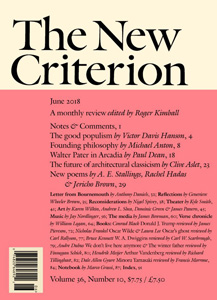
The New Criterion is a New York–based monthly literary magazine and journal of artistic and cultural criticism, edited by Roger Kimball and James Panero. It has sections for criticism of poetry, theater, art, music, the media, and books. It was founded in 1982 by Hilton Kramer, former art critic for The New York Times, and Samuel Lipman, a pianist and music critic. The name is a reference to The Criterion, a British literary magazine edited by T. S. Eliot from 1922 to 1939.
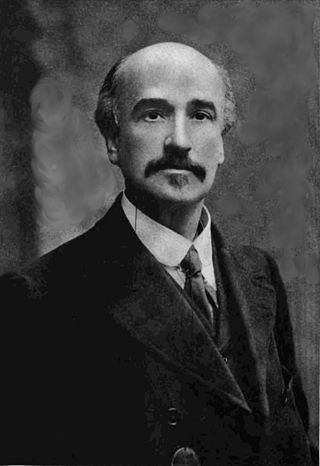
John Davidson was a Scottish poet, playwright and novelist, best known for his ballads. He also did translations from French and German. In 1909, financial difficulties, as well as physical and mental health problems, led to his suicide.

The Harvard Advocate, the art and literary magazine of Harvard College, is the oldest continuously published college art and literary magazine in the United States. The magazine was founded by Charles S. Gage and William G. Peckham in 1866 and, except for a hiatus during the last years of World War II, has published continuously since then. In 1916, The New York Times published a commemoration of the Advocate's fiftieth anniversary. Fifty years after that, Donald Hall wrote in The New York Times Book Review that "In the world of the college – where every generation is born, grows old and dies in four years – it is rare for an institution to survive a decade, much less a century. Yet the Harvard Advocate, the venerable undergraduate literary magazine, celebrated its centennial this month." Its current offices are a two-story wood-frame house at 21 South Street, near Harvard Square and the University campus.

The Smart Set was an American literary magazine, founded by Colonel William d'Alton Mann and published from March 1900 to June 1930. Its headquarters was in New York City. During its Jazz Age heyday under the editorship of H. L. Mencken and George Jean Nathan, The Smart Set offered many up-and-coming authors their start and gave them access to a relatively large audience.
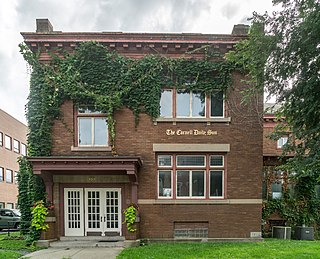
The Cornell Daily Sun is an independent newspaper published three times a week in Ithaca, New York, by students at Cornell University and hired employees.

Gustav Kobbé was an American music critic and author, best known for his guide to the operas, The Complete Opera Book, first published (posthumously) in the United States in 1919 and the United Kingdom in 1922.
The Columbia Daily Spectator is the student newspaper of Columbia University. Founded in 1877, it is the oldest continuously operating college news daily in the nation after The Harvard Crimson, and has been legally independent from the university since 1962. It is published at 120th Street and Claremont Avenue in New York City. During the academic term, it is published online Sunday through Thursday and printed twice monthly. In addition to serving as a campus newspaper, the Spectator also reports the latest news of the surrounding Morningside Heights community. The paper is delivered to over 150 locations throughout the Morningside Heights neighborhood.
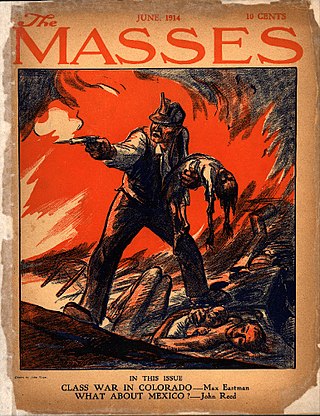
The Masses was a graphically innovative American magazine of socialist politics published monthly from 1911 until 1917, when federal prosecutors brought charges against its editors for conspiring to obstruct conscription in the United States during World War I. It was succeeded by The Liberator and then later New Masses. It published reportage, fiction, poetry and art by the leading radicals of the time such as Max Eastman, John Reed, Dorothy Day, and Floyd Dell.

Robert Leicester Wagner was the editor and publisher of Script, a weekly literary film magazine published in Beverly Hills, California, between 1929 and 1949.

Horizon was a magazine published in the United States from 1958 to 1989. Originally published by American Heritage as a bi-monthly hardback, Horizon was subtitled A Magazine of the Arts. In 1978, Boone Inc. bought the magazine, which continued to cover the arts. Publication ceased in March 1989. Recently, American Heritage announced its intention to digitize essays from past issues.

Labor Defender (1926–1937) was a magazine published by the International Labor Defense (ILD), itself a legal advocacy organization established in 1925 as the American section of the Comintern's International Red Aid network and thus as support to the Communist Party.
The American Review was a magazine of politics and literature established by the fascist publisher Seward Collins in 1933. There were 71 issues published, containing articles, editorials, notes, and reviews, before the journal ceased operations in October 1937.
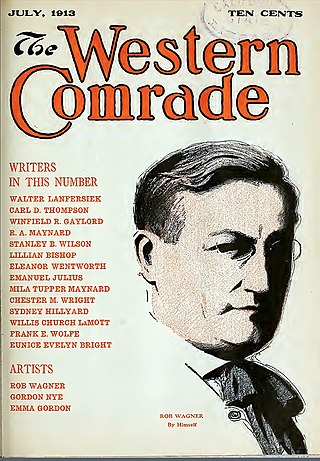
The Western Comrade was a Los Angeles-based socialist magazine published in the US from 1913 to 1918 that advocated progressive causes ranging from women’s suffrage and labor issues to profiles of left-leaning artists and writers.

Zoe Anderson Norris was a Kentucky-born journalist, novelist, short story writer and publisher, known for her bimonthly magazine, The East Side (1909–1914), which focused on impoverished immigrants in New York. She also contributed to publications including The New York Times, New York Sun, Frank Leslie's Monthly, Harper's Weekly and Argosy. She investigated journalistic topics including corrupt charity executives and child abuse cases. Her fiction plots often centered around starving artists, women deceived by hypocritical suitors and farmers battling the elements. She founded the Ragged Edge Klub, a group of writers, filmmakers, politicians and performers who met for weekly dinners. She was considered "one of the most popular writers of newspaper sketches in the country" and known as a Queen of Bohemia. An exhibition, To Fight for the Poor With My Pen: Zoe Anderson Norris, Queen of Bohemia, ran March 1-May 13, 2023, at the Grolier Club museum in New York.
The Athenian was an English-language magazine printed in Greece, featuring journalism, commentary, satire, cartoons and essays. Although its reviews and events listings focused on the cultural life of Athens, The Athenian had a wide audience of English reading residents of Greece and travelers. It was also known for its illustrated covers, its commentaries on popular and ancient Hellenic culture as well as travel information.
